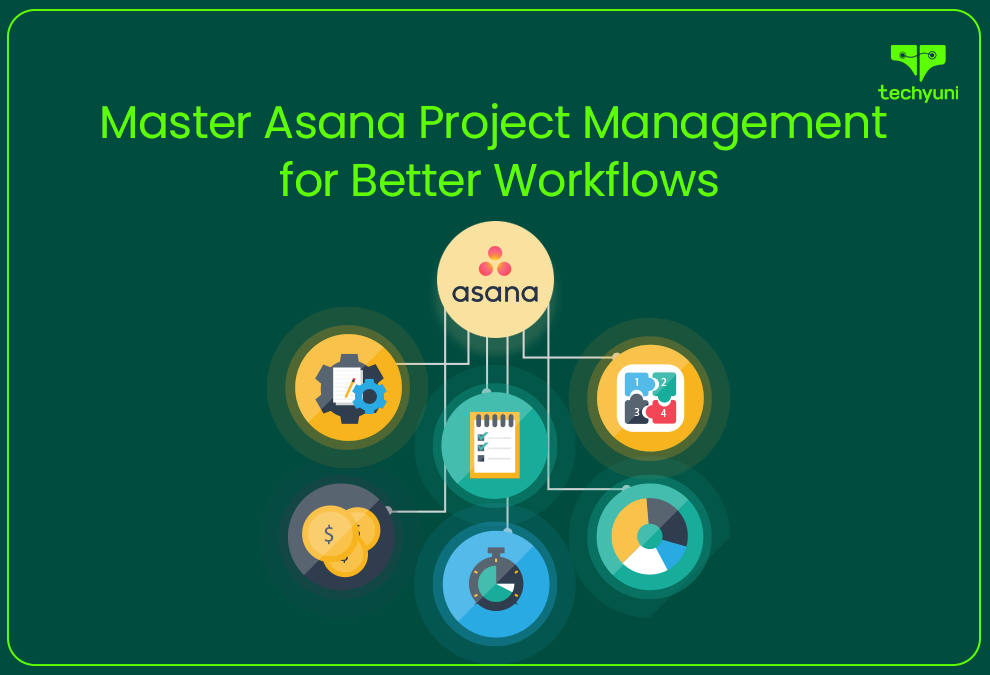
The Guide to Asana Project Management tool: Simplify Workflows and Boost Productivity
Learn how to master Asana project management tool with this easy step-by-step guide to streamline workflows and boost productivity.
If you're looking for an easy way to organize your team, track projects, and boost productivity, Asana project management tool is your ultimate solution. This beginner-friendly guide will walk you through the basics of Asana, breaking it down step by step, so you can hit the ground running in no time. Whether you’re new to project management tools or want to optimize your existing workflow, this guide has you covered.
What Is Asana Project Management?
Asana project management tool is a cloud-based platform designed to help teams streamline workflows, assign tasks, and monitor progress. With an intuitive interface and powerful tools, it eliminates confusion and keeps everyone on the same page.
From tracking deadlines to visualizing progress through customizable dashboards, Asana adapts to various industries and team sizes. Whether you're running a marketing campaign or developing a product, Asana empowers you to organize work efficiently.
Key Features of Asana Project Management
1. Task Management
Asana allows users to create tasks, set priorities, and assign responsibilities. Each task can include subtasks, due dates, and file attachments, making it easy to break projects into manageable pieces.
2. Customizable Workflows
Using templates or creating your own, you can design workflows tailored to your team’s unique processes. This flexibility ensures seamless integration with existing strategies.
3. Real-Time Collaboration
With real-time updates, comment threads, and file sharing, Asana fosters collaboration. Team members can share feedback or ask questions within tasks, eliminating unnecessary emails.
4. Project Views
From kanban boards to Gantt charts and list views, Asana provides multiple ways to visualize your project progress. These adaptable views suit different team preferences.
5. Reporting and Analytics
Asana offers reporting features to analyze productivity, spot bottlenecks, and track key metrics. The data-driven insights improve decision-making and help you optimize workflows.
Getting Started with Asana Project Management tool
Sign Up and Set Up Your Workspace
-
Visit the Asana website: Go to asana.com and create a free account. You’ll only need an email address to get started.
-
Set up your workspace: A workspace is the central hub for all your projects. You can name it after your team or business and add team members right away.
-
Explore the dashboard: Familiarize yourself with Asana’s intuitive interface. The home dashboard offers quick access to tasks, projects, and updates.
Create Your First Project
-
Click “+ New Project”: Choose between using a blank project, a template, or importing an existing project.
-
Choose a project layout: Asana offers layouts like lists, boards (similar to kanban), or calendar views. For example:
-
List View: Best for task-oriented teams.
-
Board View: Ideal for visual workflows, such as creative projects.
-
Calendar View: Perfect for deadline-driven work.
-
Set up sections: Break your project into sections or phases (e.g., “To Do,” “In Progress,” and “Completed”).
Add and Assign Tasks
-
Create tasks: Break down your project into smaller tasks. Each task should represent a specific piece of work.
-
Assign team members: Click on the task and assign it to a team member. This ensures accountability.
-
Set due dates: Add deadlines for each task to keep your team on schedule.
💡 Pro Tip: Use subtasks to break down larger tasks into smaller, actionable steps.
Use Collaboration Features
-
Add comments: Each task includes a comment section where team members can discuss progress, share updates, or ask questions.
-
Attach files: Upload files directly to tasks for easy access. This feature eliminates the need for endless email threads.
-
Tag team members: Use “@” to mention colleagues and notify them of specific updates.
Customize Your Workflow
-
Use templates: Asana offers pre-made templates for marketing campaigns, product launches, and more.
-
Automate tasks: Save time by creating rules that automate repetitive tasks (e.g., move tasks to “Completed” when marked done).
-
Integrate with other tools: Connect Asana with apps like Slack, Google Drive, or Microsoft Teams to streamline your work further.
Track Progress with Project Views
-
Use the timeline: This Gantt-chart-style view helps you visualize project dependencies and adjust schedules easily.
-
Leverage dashboards: Monitor key metrics like task completion rates or overdue assignments.
-
Check calendar views: Stay on top of deadlines by viewing tasks in a calendar format.
Review and Optimize
-
Run team check-ins: Regularly review progress using Asana’s reporting tools during team meetings.
-
Adjust workflows: Use insights from Asana’s analytics to identify bottlenecks and make improvements.
-
Celebrate milestones: Acknowledge completed tasks and major accomplishments to keep team morale high.
Best Practices for Using Asana Effectively
1. Define Clear Goals
Every project should start with a defined goal. Use Asana’s goal-setting feature to ensure alignment among team members.
2. Assign Tasks to Specific Owners
Avoid ambiguity by assigning tasks to individuals rather than groups. This clarity prevents delays and fosters accountability.
3. Use Milestones
Break large projects into milestones to track progress.To keep momentum and motivation high, acknowledge and celebrate small victories.
4. Conduct Weekly Check-Ins
Use Asana's reporting tools to review progress during team meetings. Address delays and adjust priorities as necessary.
5. Keep Projects Organized
Use tags, labels, and filters to keep tasks easy to locate. A clutter-free dashboard improves focus and efficiency.
How Asana Stands Out Among Competitors
While tools like Trello, Monday.com, and Basecamp are popular, Asana’s blend of simplicity and robust features sets it apart. Its adaptability across industries and integration capabilities make it a preferred choice for businesses worldwide.
Related: The Power of Politeness in Digital Communication: Crafting a Polite Post
Conclusion
Asana project management tool is more than just a task organizer—it’s a powerhouse that streamlines workflows, enhances collaboration, and drives team success. Whether you're tackling a complex project or managing daily tasks, Asana equips you with the tools needed to stay organized and productive.